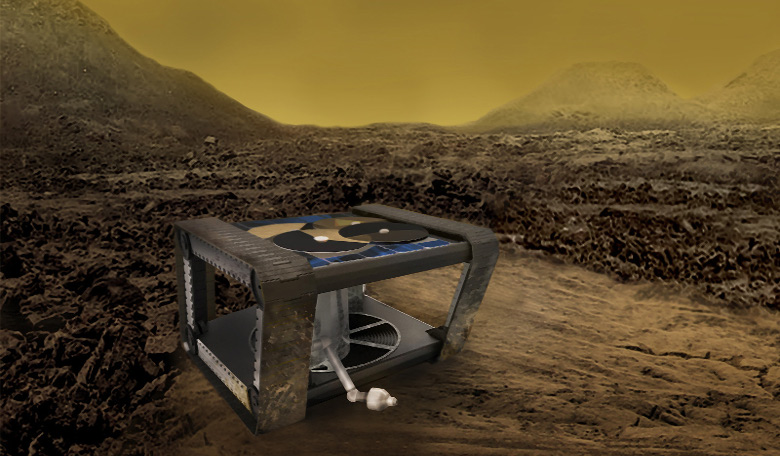A concept inspired by clockwork computers and World War I tanks has been put forward by a mechatronics engineer for a ‘steam-punk’ inspired rover, that could one day traverse the hellish surface of Venus.
The enshrouded planet of Venus is something of an enigma; past space missions have identified that its surface is covered with craters, mountains, volcanoes and big lava plains, but its average surface temperature is hot enough to melt lead and its hellish atmosphere creates pressures that would crush most submarines.
Not a place then, that humans will be travelling to anytime soon. And sending a normal rover – the type that are currently roaming around Mars – to do the legwork instead, is also not an option as the electronics onboard would be fried when its wheels touched the surface.
Step forward, or perhaps roll forward, AREE; the Automaton Rover for Extreme Environments, a design that was first proposed in 2015 by Jonathan Sauder and is being funded for study by the NASA Innovative Advanced Concepts program.
AREE is a clockwork rover inspired by mechanical computers, the type which use levers and gears to make calculations rather than electronics and in the past have been used most often as mathematical tools such as adding machines.
The oldest known is the Antikythera mechanism, a device used by ancient Greeks to predict astronomical phenomena like eclipses, but the more famous machine is a 19th century invention by Charles Babbage known as the Difference Engine, which was used for calculating algebraic equations.
By relying dispensing with electronics, a mechanical rover might be able to better explore Venus. "Venus is too inhospitable for kind of complex control systems you have on a Mars rover," said Sauder. "But with a fully mechanical rover, you might be able to survive as long as a year."
Now in its second phase of NIAC development, Saunder and supporting JPL team are selecting parts of the AREE concept to be refined and prototyped. One hurdle the team will need to overcome is how to transmit any data a rover could gather if it lasted long enough on Venus’s surface.
The answer might be as simple as another age-old technology; morse code. For this to work however, an orbiting spacecraft and the rover would have to communicate by way of pinging radar signals at one another in a method that is described as working like "stealth technology in reverse.”
By reflecting radar signals instead of dispersing them, as traditional stealth planes do, if the rover was equipped with a specially designed radar target, the two could communicate much the way signal lamps on Navy ships do, but instead of flashing light, they will flash radar signals at one another.
"When you think of something as extreme as Venus, you want to think really out there," said Evan Hilgemann, a JPL engineer working on high temperature designs for AREE. "It's an environment we don't know much about beyond what we've seen in Soviet-era images."











